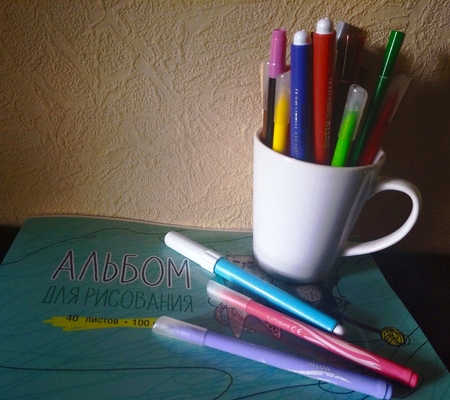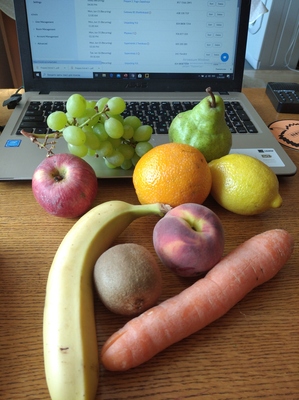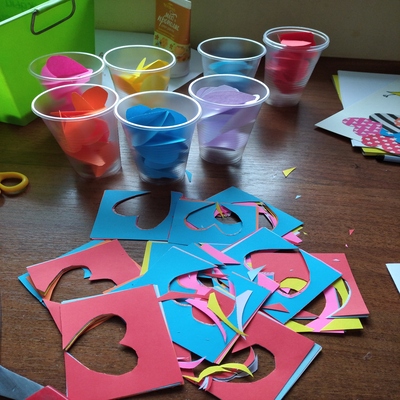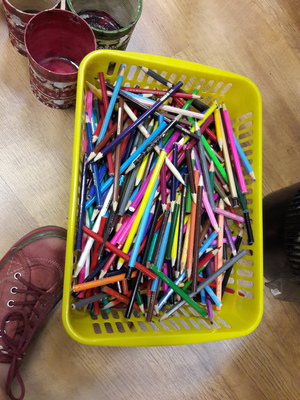
Well, hello! Welcome to Mars!
This is the second post in the series devoted to no/little prep activities that might save your teaching skin (and sanity) when unexpectedly you find yourself in the classroom and no Earthly rules apply, due to the unfortunate combination of factors. Today, a lesson for the little people.
Pre-scriptum #1 Don’t forget to check out the introduction to the series, here and the first episode, here.
Pre-scriptum #2 All the photos in this post are the memories of all these blissful days when there WAS time to prepare…
Pre-scriptum # 3 Just as a reminder, these are the rules of the game: due to some combination of factors, regardless of who might be to blame, a teacher unexpectedly finds herself (himself) in a situation when there is no lesson plan, very few resources (perhaps nothing or almost nothing from The List) and you still have to survive a lesson with an age group. Here are some ideas on how to survive that. And the kids are about to enter the room in 3…2…1…

First things first
No matter how little time you have and whether you have been to this particular Mars before (I mean the school), do not let the kids into the classroom before the lesson. If you want to read more about why not, you can find my earlier post here.
If it so happens that your students are already in the classroom, don’t worry, nothing is lost. You can just take all the kids out first, line them up, count them and take them into the classroom, one by one. You are not going to do it in order to kill the lesson time, quite the contrary, it is going to help to re-introduce the order and to show the children who is in charge. Even if they don’t know you or, especially if they don’t know you. They will be curious and it will be easier to manage them.
If you really don’t want to take them out or if it is impossible, you can move to step two: try to include an activity that the whole group is going to be involved in. Get everyone to sit in a circle (on the stools or on the carpet) or to stand in a circle, wait for the kids to calm down (counting from 10 to 0 showing your fingers might help) and the proceed with a few miming activities. There is no need to give very specific instructions or to explain what you are going to do, use ‘a punctuation mark’, for instance (3,2,1 everybody is…) and add an activity. ‘Everybody is clapping’, ‘Everybody is marching’, ‘Everybody is waving’, ‘Everybody is dancing’, etc. For the kids it will be an opportunity to be involved in some movement and it will help them to focus in the following activities. It will be also a chance to do something together, as a group. For the teacher it will be a chance to show authority and to see how follows the rules.
Say hello and get the kids’ names will be the next step. The kids will have already listened to you, they have started the lesson in a fun way and that is the best time to find out their names. If the group is a new one, I like to put their names on the board (ideally using different colour markers so that the kids can recognise their names, too, or by adding a different symbol for each child, something that is easy to draw i.e. a flower, a car, a star etc) .
Revision might not be applicable but regardless of the kids’ level, I would like to go back to something that they are likely to know and respond to well, and one of such topics are colours and numbers. Some of the activities that are easily implemented can include:
- counting a few times, first chorally, then individually, using different voices (happy, sad, angry, sleepy) and pace (very fast, very slow)
- counting forward and counting backwards or counting with skipping one of the numbers or by skipping every other number and replacing it with a random word. Here, I would use ‘a banana’ or ‘a zebra’ because they are the same in Russian and they are definitely not a number so they will be easy to use in this activity. You can count again but in a crazy way, for instance ‘One, zebra, three, zebra, five, zebra, seven, zebra, nine, zebra’ etc.
- counting things in the classroom ie boys and girls present, all the hands, legs and noses present, lamps, windows, pictures. It is not a given that the children will know all these words but they can still count them with the teacher.
- colours: first revise the colours with all the objects that are available in the classroom. Kids usually wear colourful clothes so your students alone are quite likely to have all the colours on them already.
- I can see, I can see, I can see something….blue, which is a version of ‘I spy with my little eye’ but with a slightly easier rhyme and much easier to show (I tap my chest twice for ‘I’ and ‘can’ and then I point to my eyes). When the kids hear the colour, they point at something of that colour. If the group is strong, the students can take turns and be the teacher. It might be also possible to add two adjectives here ‘big’ and ‘small’ and then it turns into a real game, with the entire classroom.

Option 1: there are flashcards on Mars and, if so, I pick up the folder with animals.
- Why? Because animals are one of the coolest topics that most kids can relate to, a generative topic appropriate for the more or less ‘advanced’, a topic that can be made digestible because at least some of the animals can be chosen based on principle ‘the same / similar as in L1’, this topic lends itself to a great variety of activities.
- new vocabulary: introduction using voices, drilling, riddles (What’s this?), missing cards
- miming: first the teacher mimes the animals for the kids, then the kids mime for each other
- new structures: a variety of structures can be used here ie I am green / yellow / blue, I am big / small / happy / sad / angry, I can run / fly / swim, I like grass / meat / fish / fruit
- focused task: based on my craft activity ‘don’t you just love a circle’. The original activity involves some additional resources (coloured paper and glue for kids) and preparation (pre-cutting the circles for each child, had to be done before the lesson) but it can be skipped, too as all the circles that are used for the basis of all the animals can be drawn by the kids. You can start with drawing circles in the air and drawing circles with a finger on the desk. Only afterwards the teacher gives out a piece of paper and a simple pencil per student. The teacher asks the kids to draw five circles on the paper and, step by step, the kids transform all the circles into animals. The cat, the frog, the bird and the fish are among the easier ones. The kids are able to draw their own as long as the teacher leads them through the activity and transforms the circles into animals, step by step, drawing on the board for the kids to copy. Afterwards, if there are crayons or markers, the kids can colour the animals. If not, they can do it at home.
- focused task production: once the circle animals are ready, they can be used in a listening / speaking game. The teacher makes sentences about animals, using the first singular and the structures that the students have practised ie I am big. The kids listen and point at one of the animals. Afterwards the kids take turns to produce sentences.
- songs: I would probably go for ‘Old McDonald’s’ because this is a song that can be sung from memory, almost forever, with different animal voices that the kids will be able to join and I am sure that nobody will mind if our farm of Mr McDonald also houses tigers, elephants and seals…

Option 2: there are no flashcards on Mars and, if so, I choose the topic: shapes
- Why? Because shapes are one of the topics that is definitely under-loved and under-appreciated in all the coursebooks, despite the fact that shapes are everywhere around us and that shapes is teaching logic, maths and developing cognitive skills. Children are familiar with them and they can be used in a variety of ways.
- new vocabulary: shapes flashcards are very easy to produce, even if there is no coloured paper or no time to colour, they can be easily cut out of white paper, in the worst case scenario. I would use these to introduce and practise vocabulary. If there was no time to cut things out, I would draw them on the board or on a piece of paper, while already in class, and this would be my main tool to work with the new vocabulary.
- practice: drill the new words using different voices, point at the shape, draw the shape in the air / on the floor
- movement: make the shape with your hands, make the shape with your friends with kids holding hands, standing on the carpet, the circle will be the easiest to do and to start with, all the other ones can be started with the kids standing as the tops of the angles in each shapes
- Can you see a circle?: the teacher draws one of the shapes on the board and asks the kids to look for circles in the classroom and pointing at them (‘I can see a circle’). These circles can also be counted.
- focused task / production (1): the kids practise drawing in the air and on the desk with their fingers. The teacher gives out paper and pencils. The teacher draws a circle on the board and the kids on their papers. The teacher draws the eyes and the smile, the students choose the emotions for their shapes. They proceed with the other shapes. Apart from the circle, the other shapes might be challenging for some children and they need to be taught how to draw these. The teacher can start with marking three dots for the triangle first and then connecting them with lines and the same for the other shapes. If time, the kids can turn their shapes into characters by adding legs and arms. The teacher and the students describe their shapes ie My circle is happy.
- focused task / production (2): the kids practise drawing in the air and on the desk with their fingers. The teacher gives out paper and pencils. The teacher dictates and models, the students draw the shapes, one by one. The teacher says ‘It’s a circle’, then she covers the circle and turns into something else ie a ball, a clock, a flower, a balloon, etc. The teacher says ‘Abracadabra, it’s a clock’. The kids turn their circles into a clock. The teacher says ‘It’s a clock’, the kids repeat. Then the same procedure with the other shapes: the square (a house, a picture, a book, a present), the rectangle (a robot, a car, a tower), the rhombus (a kite, a flower), the triangle (a boat, a house, a volcano).

Coda
I wouldn’t like you to think, dear reader, that I do not care about the standards and that, as a teacher or as a mentor, I might accept the approach in which the teacher enters the classroom ‘just to hang out’ or ‘to babysit’ perhaps following what Reilly and Ward (1997) have been promoting in their book (the two quotes that I still haven’t forgiven them for and I doubt I ever will)*. That is definitely NOT the case.
We are teachers and we are professionals, we enter the classroom to impart knowledge, not to kill the time. However, there might be situations in which you actually are as if on another planet and you want to use the lesson time as well as it is only possibly, albeit with very limited resources and no time to prepare. I hope that never happens to you in real life but if it does, now you are better prepared for that. Hopefully.
Happy teaching!

P.S.
Here is a real life account of a first lesson with VYL from Sandy Millin, with some more ideas.
P.P.S. The unforgiven
Quote 1: ‘There are certain advantages in teaching the pre-school age group. One of the main bonuses for the teacher is that there are usually no strict syllabuses to follow, no tests, and no performance objectives to be met’ (Reilly and Ward, 1997: 7)
Quote 2: ‘However, if you have been using English, they will have been learning even if you have not done a single thing on your lesson plan’ (Reilly and Ward, 1997: 8).
Both quotes come from the book by Vanessa Reilly and Sheila M. Ward, Very Young Learners, published by OUP in 1997. I do appreciate the authors as for a very (very, very, very) long time (20 years!!!!), this was the only book that teachers could use to get any idea about the age group and the activities that might be used in the classroom. I will be eternally grateful to the authors for being there to support many generations of VYL teachers. BUT at the same time it makes me very unhappy that these two quotes found their way into the book (even in my 2011 edition) and that for two decades these VYL teachers were learning that, essentially, it does not matter what you do with your pre-schoolers as long as you do it in L2. It does not matter whether they speak, it does not matter what they take out anything of the lesson and whether there is any progress at all.
That is, of course, not true. I doubt it was true in 1997 and it definitely is not true in 2021. So there.
2 thoughts on “When you suddenly land on Mars with a pre-school group”